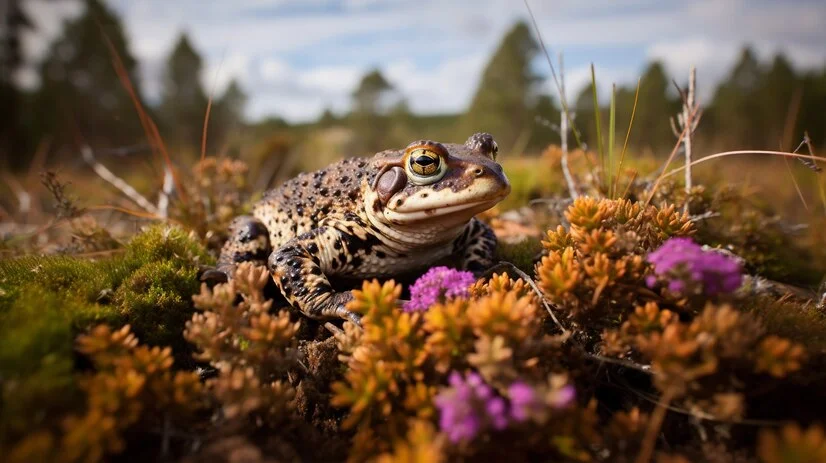Introduction: The Importance of Biodiversity in Eastern Regions
Biodiversity is the variety of life on Earth, and it plays a crucial role in maintaining ecosystems, supporting food security, and combating climate change. Eastern regions, home to some of the world’s richest biodiversity, are under immense pressure from human activities and climate change. Preserving these natural habitats is not only essential for the planet’s well-being but also for the survival of countless species, many of which are endangered. In this article, we will explore the importance of biodiversity hotspots in Eastern regions and how efforts to preserve endangered species can help maintain these vital ecosystems.
What Are Biodiversity Hotspots?
Biodiversity hotspots are regions that are both rich in species and threatened by human activity. According to Conservation International, there are 36 such hotspots worldwide, covering less than 2.3% of the Earth’s land surface, yet they contain more than half of the world’s plant species and around 43% of bird, mammal, reptile, and amphibian species. These hotspots are critical for global conservation efforts because they harbor a disproportionate amount of the Earth’s biodiversity in a relatively small area.
In Eastern regions, biodiversity hotspots include tropical forests, mountains, wetlands, and coral reefs. These areas provide habitat for thousands of species, many of which are found nowhere else on Earth. However, these regions are under threat from deforestation, over-exploitation, and climate change, making conservation efforts more urgent than ever.
Top Biodiversity Hotspots in Eastern Regions
Some of the most important biodiversity hotspots in Eastern regions are found in Asia, which is home to a staggering number of species. Here are a few examples:
- Sundaland (Indonesia and Malaysia): This tropical rainforest area is home to unique species like the orangutan, pygmy elephant, and tigers. It is one of the most biodiverse regions in the world but faces significant threats from logging and palm oil plantations.
- Indo-Burma (Cambodia, Laos, Vietnam, Thailand, Myanmar, and southern China): Known for its rich biodiversity, this region hosts species such as the Indochinese tiger, the giant river catfish, and countless bird species. However, illegal hunting and habitat loss are pushing these species toward extinction.
- The Himalayas (Nepal, India, Bhutan, China, and Pakistan): The Himalayan mountain range is home to endangered species like the snow leopard, red panda, and Tibetan antelope. These ecosystems are being threatened by climate change, illegal poaching, and human expansion.
- The Philippines: An archipelago with some of the world’s highest levels of biodiversity, the Philippines faces the extinction of species like the Philippine eagle and the Visayan warty pig due to habitat loss and illegal hunting.
Endangered Species in Eastern Biodiversity Hotspots
The Eastern regions are home to some of the most endangered species on the planet. Many of these species are unique to their respective habitats, making them incredibly vulnerable to extinction. Here are just a few examples:
- Sumatran Tiger (Indonesia): With fewer than 400 individuals remaining, the Sumatran tiger is critically endangered due to habitat loss, poaching, and human-wildlife conflict.
- Yangtze Giant Softshell Turtle (China): One of the world’s rarest animals, with only four known individuals left, this turtle is on the brink of extinction due to habitat destruction and pollution.
- Javan Rhino (Indonesia): With fewer than 75 individuals left, the Javan rhino is one of the most endangered large mammals on Earth. The species is threatened by habitat loss and human encroachment.
- Asian Elephant (India and Southeast Asia): With a population that is rapidly declining due to poaching, habitat destruction, and human-wildlife conflict, the Asian elephant is classified as endangered on the IUCN Red List.
Threats to Biodiversity in Eastern Regions
Biodiversity hotspots in Eastern regions face several threats, many of which are driven by human activity. These include:
- Deforestation: The destruction of forests for agriculture, logging, and urban development is one of the leading causes of biodiversity loss. It not only reduces habitat for wildlife but also contributes to climate change by releasing carbon stored in trees.
- Poaching and Illegal Wildlife Trade: The demand for exotic pets, traditional medicine, and luxury goods drives illegal hunting and trade, putting species at risk of extinction.
- Climate Change: Changing weather patterns, rising temperatures, and shifting rainfall affect species’ habitats and food sources. Many species in Eastern biodiversity hotspots are unable to adapt to these rapid changes, leading to population declines.
- Pollution: Industrial pollution, plastic waste, and chemical runoff are contaminating ecosystems, making it harder for species to survive and reproduce.
- Over-exploitation of Resources: Overfishing, hunting, and logging are depleting resources faster than they can be replenished, putting additional pressure on wildlife.
Conservation Efforts: Protecting Endangered Species
Conservation efforts in Eastern biodiversity hotspots are critical for preventing the extinction of endangered species. These efforts often involve a combination of strategies:
- Protected Areas: Establishing national parks and reserves helps preserve critical habitats and offers a safe space for endangered species to thrive.
- Wildlife Corridors: Connecting fragmented habitats with corridors allows species to migrate, find food, and breed, improving their chances of survival.
- Anti-Poaching Laws: Strengthening enforcement of wildlife protection laws and supporting local authorities helps reduce poaching and illegal trade.
- Sustainable Development: Encouraging sustainable agriculture, eco-tourism, and green infrastructure can help balance human development with the need to protect nature.
- Captive Breeding and Reintroduction: For critically endangered species, captive breeding programs and reintroduction into the wild offer a last-ditch effort to preserve the species.
Role of Local Communities in Biodiversity Conservation
Local communities play a vital role in the conservation of biodiversity hotspots. They are often the first line of defense in protecting ecosystems and endangered species. Community-based conservation programs empower local people to become stewards of their natural resources. These programs promote sustainable livelihoods, education, and active participation in conservation efforts.
For example, in the Sundaland region, local communities are involved in sustainable farming and eco-tourism initiatives, reducing their reliance on destructive practices like logging. In India, community-run wildlife protection programs help prevent poaching and support the conservation of elephants and tigers.
International Collaboration for Biodiversity Protection
Biodiversity conservation is a global issue that requires international collaboration. Countries within Eastern regions are working together to protect their shared ecosystems. Initiatives like the Convention on Biological Diversity (CBD) and the International Union for Conservation of Nature (IUCN) are crucial platforms for coordinating global conservation efforts.
International partnerships between governments, NGOs, and local communities have led to the creation of transboundary protected areas, collaborative research programs, and shared resources for conservation. The success of these efforts depends on the willingness of countries to work together and share responsibility for the world’s biodiversity.
The Future of Biodiversity Hotspots in Eastern Regions
The future of biodiversity hotspots in Eastern regions is uncertain, but there is hope. Ongoing conservation efforts, increased awareness, and global collaboration provide a foundation for preserving these vital ecosystems. However, urgent action is required to prevent further loss of species and habitats.
Innovations in technology, such as drone monitoring and genetic research, are helping conservationists track endangered species and improve protection efforts. Moreover, the global community must continue to address the underlying drivers of biodiversity loss, such as climate change and unsustainable consumption patterns.
Conclusion: Urgency of Preserving Biodiversity for Future Generations
Biodiversity hotspots in Eastern regions are among the most important and endangered ecosystems on Earth. They are home to countless species, many of which are on the brink of extinction. Preserving these areas requires coordinated efforts from governments, NGOs, local communities, and individuals. By taking action now, we can ensure that future generations will inherit a world rich in biodiversity, with healthy ecosystems that support life on Earth. The fight to protect these hotspots is not just about saving endangered species, but also about ensuring the sustainability of our planet for years to come.


